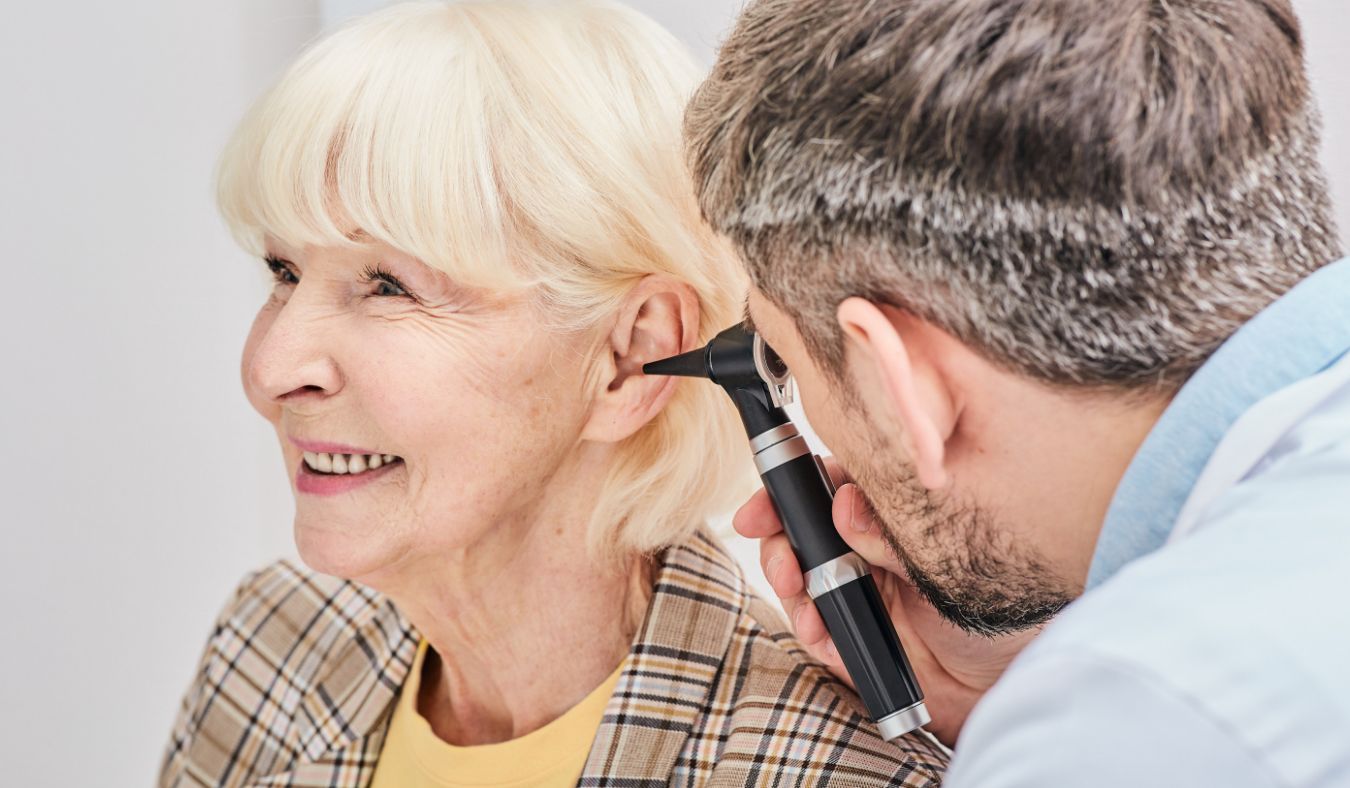What to Expect and How to Prepare for Your Hearing Test
When you arrive for your hearing test, you can expect a straightforward

By: admin | September 3, 2025
When you arrive for your hearing test, you can expect a straightforward appointment that starts with conversation rather than testing. Your audiologist will ask about your medical history, current medications and the specific hearing challenges you’ve noticed, whether that’s missing parts of conversations or struggling to hear in background noise. They’ll also examine your ears and explain how your hearing system works, setting the stage for the tests that follow. This initial phase helps your audiologist understand your situation and tailor the appointment to address your specific concerns.
Preparing ahead of time can make your appointment more productive and help you feel more confident going in. Before your visit, take a few minutes to write down notes about when you first noticed hearing difficulties, which situations are most challenging and any medications or supplements you take. If you already wear hearing aids, bring them with you. Having this information ready means you won’t forget important details, and it helps your audiologist get a complete picture of your hearing health right from the start.
Sometimes you might start missing parts of conversations or needing others to repeat themselves, even if it doesn’t feel like a big deal. You could notice the TV or radio turned up higher than usual, or that certain environments, like restaurants or crowded rooms, make it hard to follow what’s being said. These subtle signs can indicate your hearing needs a closer look. Paying attention to these moments helps you address concerns before they start affecting everyday life.
Certain life situations can make a hearing test especially important. Spending a lot of time in noisy workplaces, being in your 40-50s or having a family history of hearing difficulties can all increase your risk. Even changes in your social or professional life, like struggling in meetings or group conversations, can be a signal. Regular evaluations give you clear insight and let you take simple steps to maintain your hearing health.
Taking a few simple steps on test day will help you get the most accurate results from your hearing evaluation.
Stay away from loud noises for at least 16 hours before your appointment since loud sounds can temporarily change your hearing ability. This means avoiding concerts, construction sites or other noisy environments that could affect your test results.
The morning of your hearing test requires just basic preparation. Clean your ears gently with a washcloth but never use cotton swabs, which can push wax deeper into your ear canal. Leave any ear wax alone rather than trying to remove it right before the test. Skip hair products or accessories that could get in the way of headphones or other testing equipment.
Get a good night’s sleep and eat a regular meal before your appointment to help you stay alert during the test. Plan to arrive a few minutes early so you can complete paperwork without rushing. Bring your insurance card and identification with you.
If you currently wear hearing aids, bring them to the appointment even if they need repairs. The audiologist can check their settings and performance as part of your evaluation. Consider asking a family member or friend to come along to help you remember what the specialist tells you. Getting enough sleep the night before helps you stay focused during the different parts of the test.
Walking into your appointment with the right information makes everything run smoother and helps the audiologist provide better care. A complete list of your current medications matters because some drugs can affect hearing or cause ringing in the ears. Write down all medications you take, including prescriptions, over-the-counter drugs and supplements. Having these details ready allows the specialist to make recommendations that fit your particular situation and lifestyle.
Writing down specific situations where you have trouble hearing helps the specialist understand your daily experiences. Note these common problem areas: conversations in busy restaurants or crowded places, understanding people when they’re not facing you, phone conversations, especially on cell phones, following dialogue while watching television, hearing in meetings or group discussions, and noticing if certain voices are harder to understand than others.
Think about recent health events that might affect your hearing, including ear infections, head injuries or sudden changes in your ability to hear. Previous hearing test results provide valuable comparison points, so bring copies if you have them from other clinics or specialists. Prepare questions you want to ask about your hearing health and possible treatment options. Bringing your insurance cards saves time during check in and ensures proper billing procedures.
Before any testing begins, your audiologist will gather detailed information about your health and hearing history. This includes asking about past ear conditions, current medications and any symptoms you may be experiencing. You might also discuss how your hearing affects daily activities, work or social situations. Providing this information helps your audiologist understand your unique situation and tailor the evaluation to your needs.
Next, the audiologist will perform a physical examination of your ears. This often involves looking inside the ear canal and checking the eardrum to ensure there are no obstructions or conditions that could affect hearing. This step helps rule out common issues such as wax buildup or infections, which can interfere with accurate testing. Taking the time for this initial assessment ensures that the hearing test results reflect your hearing health as accurately as possible.
During a standard hearing test, your audiologist will use different tests to understand various aspects of your hearing. No single test provides the full picture, so the audiologist determines which evaluations are necessary based on the information you shared about your medical history, medications and symptoms, as well as the results of the ear examination.
This approach ensures the testing is tailored to you, focusing on areas where you might have difficulty and avoiding unnecessary assessments. The following are common tests you may encounter during a standard hearing evaluation:
Each of these tests provides important information that helps your audiologist create a clear picture of your hearing health. Together, the results guide recommendations for solutions, including whether hearing aids may be appropriate and which types or styles could suit your needs.
Once your hearing tests are complete, your audiologist will review the results with you. One of the main tools they use is an audiogram, which charts how well you hear different frequencies and volumes in each ear. The audiogram shows which sounds are easier or harder for you to detect, helping you see patterns in your hearing. Your audiologist will explain the chart in straightforward terms, pointing out areas where your hearing is strong and where it may need support.
Your audiologist will also walk you through what these results mean for your daily life and communication. They will discuss whether hearing aids could improve your ability to hear in various situations and explain the different styles and features available. This step ensures you have a clear understanding of your hearing health and the options you can explore. Having this information helps you make informed decisions about next steps and gives you a practical plan for improving your hearing.
Hearing aids are the most common and effective solution for addressing hearing difficulties. They come in a variety of styles to fit different preferences and needs, including behind-the-ear (BTE), in-the-ear (ITE), completely-in-canal (CIC) and receiver-in-canal (RIC) models. Each style is designed to suit specific levels of hearing needs, comfort preferences and lifestyle considerations, so you can find a device that works well for you.
Modern hearing aids also offer a range of features that can improve your daily life. Some include directional microphones that help focus on specific sounds, noise reduction to make busy environments easier to manage and wireless connectivity for phones and other devices. With the guidance of an audiologist, you can explore these options to choose the style and features that best match your hearing needs and daily routines. Proper selection and fitting help ensure that the device works effectively and comfortably, supporting clearer hearing in various situations.
After your hearing test, it’s important to fully understand the results and what they mean for your day-to-day life. Ask your audiologist to explain your audiogram in detail, including which frequencies you may have more difficulty hearing and how this could affect conversation, work or other activities. You can also inquire about how your hearing compares to normal levels for your age, and whether your results suggest a gradual change or something that requires more immediate attention. Understanding these details helps you make informed choices about the next steps.
When discussing treatment options, it’s helpful to ask about the different styles of hearing aids available and which might best suit your lifestyle and hearing needs. Questions about features, like noise reduction, directional microphones or wireless connectivity, can help you decide which technology will be most useful. You can also ask how the fitting process works, how long it typically takes to adjust to a new device and what ongoing support or follow-up care is provided.
Understanding your hearing and getting professional guidance is an important step toward maintaining your overall well-being. Taking the time to review your experiences, ask questions and learn about your results helps you make informed decisions that suit your daily life. Even if your hearing feels fine, these conversations give you insight into what is normal for you and can highlight small changes that are easier to address early.
If you want support in understanding your hearing and exploring solutions, our audiologists in Arcadia and Pasadena, CA are here to help. Contact us at (626) 361-4301 to schedule a visit or discuss your questions. Working with a specialist ensures you have the right information and guidance to make decisions about your hearing that fit your lifestyle and needs.
Tags: hearing care services, hearing health tips, hearing test basics

When you arrive for your hearing test, you can expect a straightforward
By: admin | September 3, 2025

Tinnitus is commonly described as a ringing, buzzing or hissing sound that
By: admin | June 20, 2025
